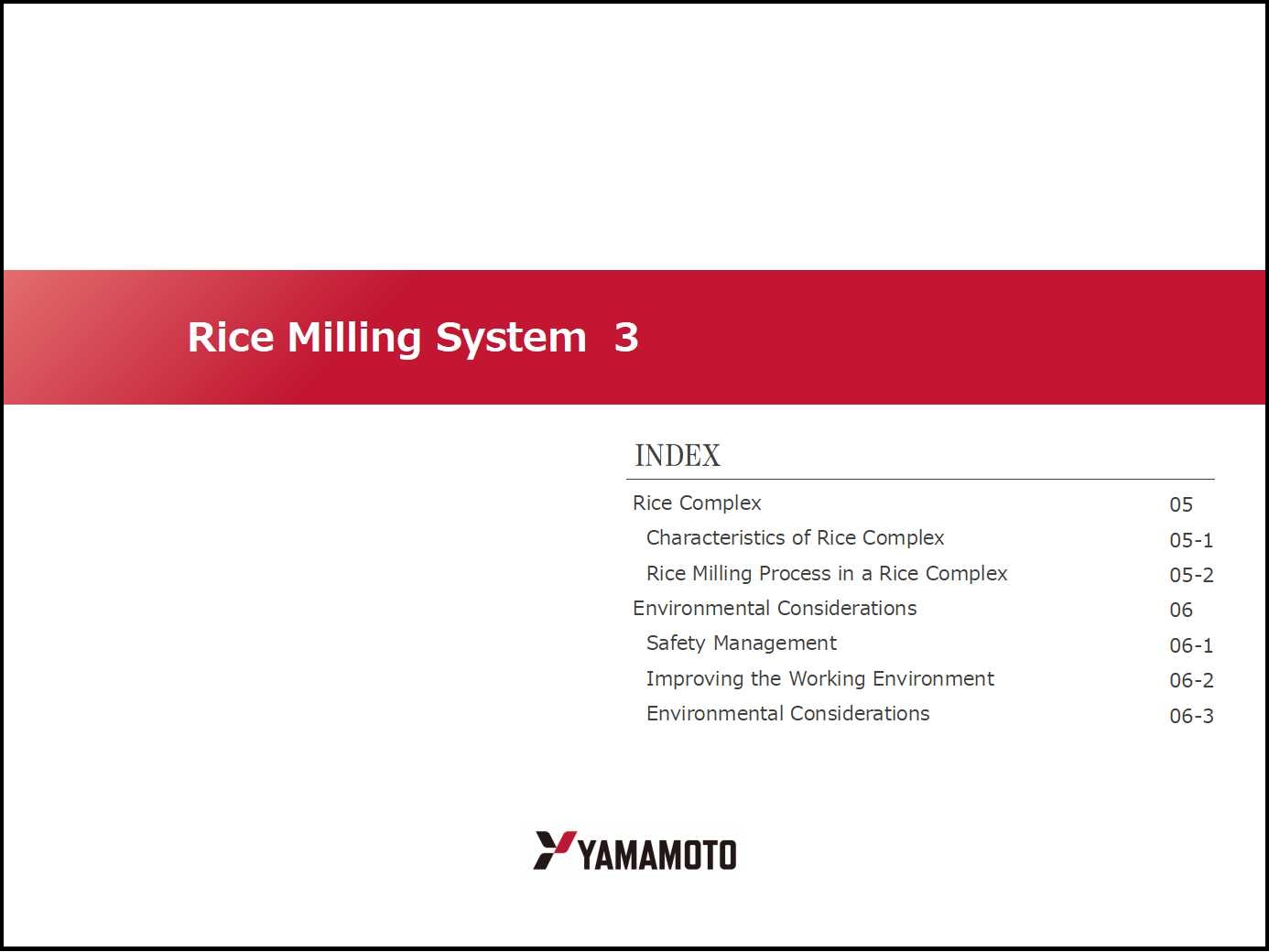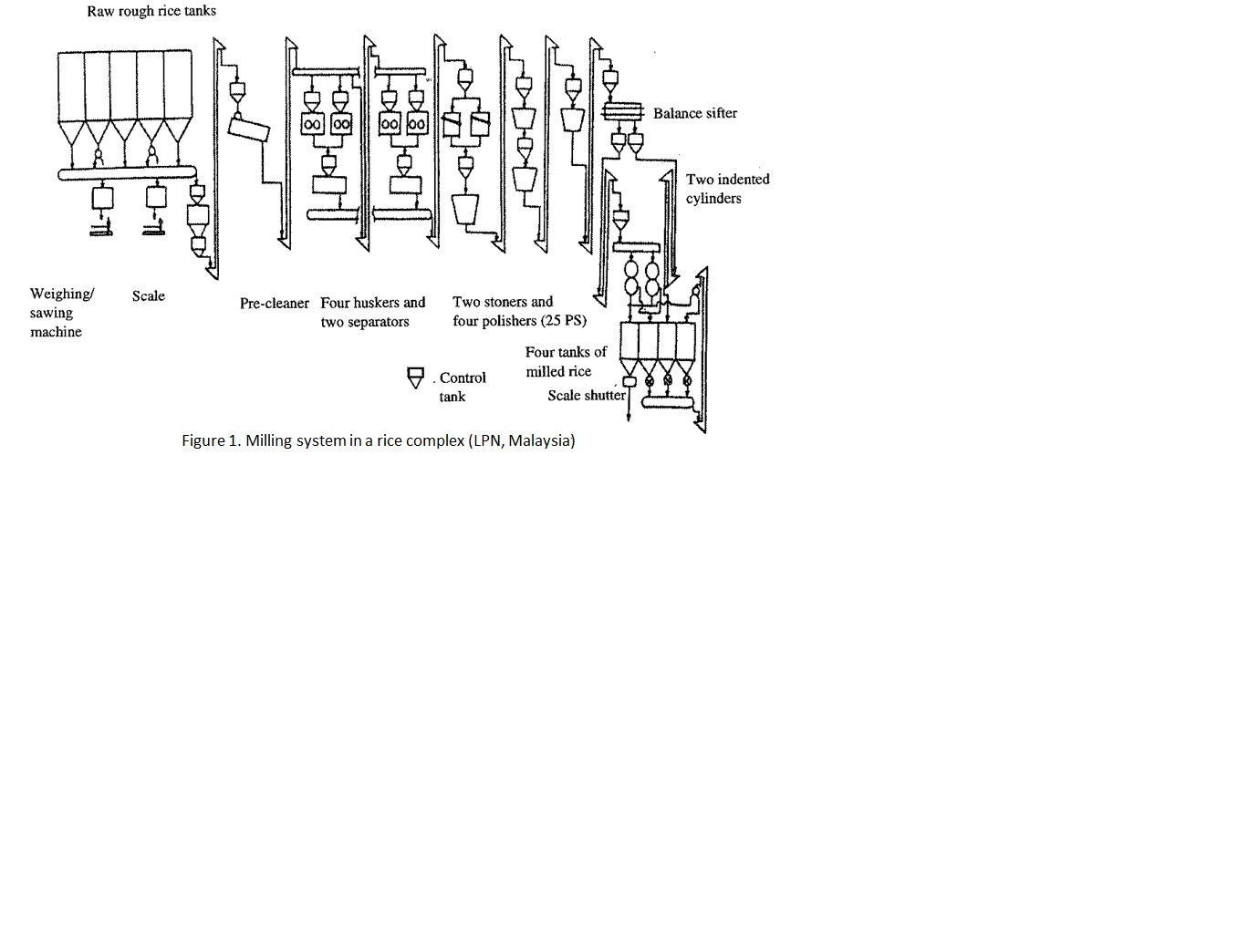48. Rice Milling System 3
- INDEX -
Rice Complex
Characteristics of Rice Complex
Rice Milling Process in a Rice Complex
Environmental Considerations
Safety Management
Improving the Working Environment
Environmental Considerations
Rice Complex
Characteristics of Rice Complex
A rice complex is a collective system consisting of rice drying and storage facilities and a rice milling facility.
This arrangement is not seen in Japan. In some countries, milled rice is distributed not only on a private basis but also by governmental and public corporation rice mills to assure stable domestic supplies of milled rice.
Although the arrangement differs, there are many small to medium-scale rice mills operated by KUD (agricultural cooperative association) in Indonesia.
LPN (Lambaga Padi Dan Beras Negara) in Malaysia has 36 domestic rice complexes.
NFA (National Food Authority) in the Philippines also has domestic rice complexes.
Some are constructed by the government and others in cooperation with foreign countries.
Rice Milling Processing Process in a Rice Complex
An example of husking and polishing processes in a rice complex is shown in Fig 1. It is almost fully equipped. Many rice complexes are also equipped with drying equipment and storage silos with, for instance, a 6,000 ton capacity to be modernized beyond the level of domestic commercial mills. In rice producing districts in tropical areas, there are problems of drying and storing rice harvested during the rainy season. There has also been problem that more rice is sold to commercial mills than to rice complexes and that there is a tendency for rice of an inferior grade to be collected by a rice complex.
Rice complexes in some countries use high technologies.
Although equipped with modern machines, technical improvements are not achieved without management and in-service training for workers.
The more the equipment is modernized, the more difficult its maintenance and management become.

